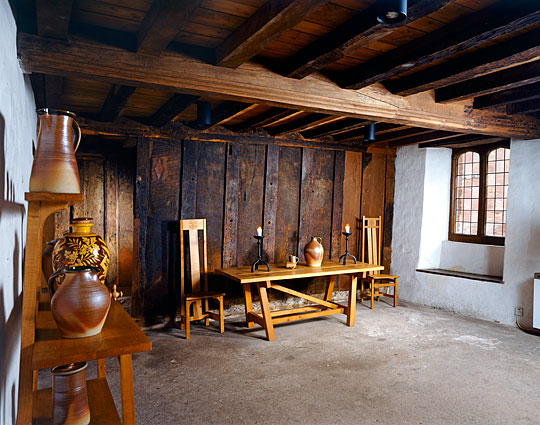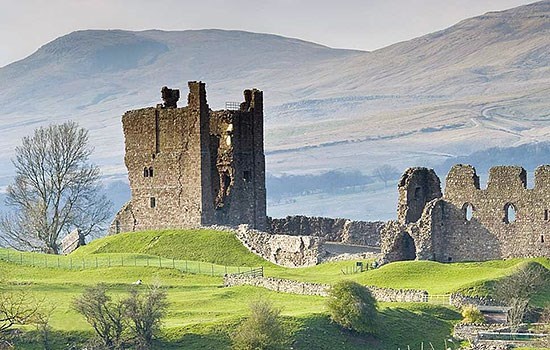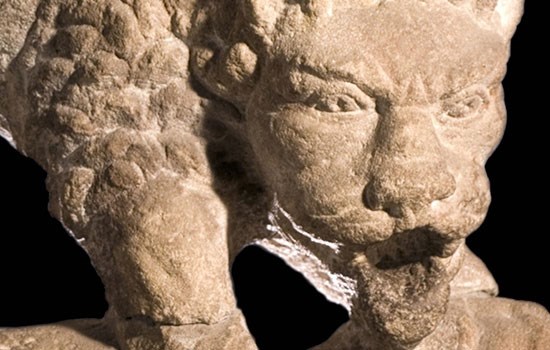History of Kirkham House
Kirkham House is a well-preserved late medieval house, built of local stone. It lies near the centre of the town of Paignton, which 500 years ago was a small village clustered around its parish church, not far from the palace of the bishops of Exeter.

Today Kirkham House stands in a crowded back street opposite new housing of starkly contrasting character. From outside it is hard to imagine it as it once was, probably rendered and limewashed, and surrounded by buildings of a similar nature. Step inside the house, however, and it is possible to forget some of the 21st-century bustle.
Although it was once known as the Priest’s House, it is more likely to have been the house of a well-to-do landowning or merchant family: the detailing inside the house suggests that it belonged to someone of high status.
There are no documents to tell us exactly when or by whom it was built. The carving on the woodwork suggests a 14th-century date, but the layout of the house is more typical of the 15th century, when a growing desire for privacy led to the creation of separate rooms for different domestic activities. It has the traditional three-room plan found in rural farmhouses of this date.
Description of the Interior
The entrance to the house is through a fine arched oak doorway, added in the 16th century to bring the house more up to date. Beyond lies a typical medieval screens passage, giving access to the hall on the right and a parlour on the left. Each room has a fine hooded fireplace.
The parlour is elaborately finished and was probably intended for business use, though it may also have been used for private relaxation. There was once an ornate stone washbasin here, but it has been removed and taken to the parish church in Goodrington.
The hall was intended for more formal occasions, with enough space for the whole household – perhaps as many as 20 people – to dine together. Food came via the screens passage from an outside kitchen (now ruined). As in the parlour there was originally a finely carved washbasin here, which is now in the vestry of Paignton parish church. Beyond the hall lies a separate unheated room which once had its own outside doorway. This may have been a store, or even a shop, at some period in its history.
A staircase from the parlour leads to the three upper rooms. Above the parlour is the best chamber, and this gives access to a small second chamber, which is partly jettied out over the hall below. A gallery, added in the 16th century, leads to a third chamber at the far end of the house, with its own garderobe and an attic above. These two rooms originally had their own outside staircase and may have been intended for use by servants.
Today a number of examples of modern furniture are displayed in the house, to illustrate traditional English timber and joinery techniques.
Further Reading
Anon, Kirkham House (English Heritage, London, 1985)
Beacham, P (ed), Devon Building (Plymouth, 1990)
Cherry, B and Pevsner, N, The Buildings of England: Devon (London, 1989)
FIND OUT MORE



